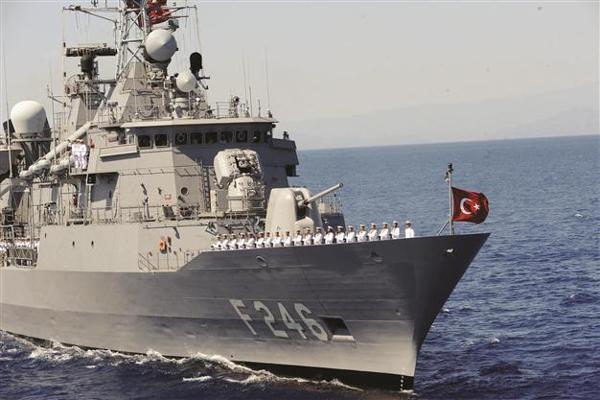Lockheed Martin sole bidder left for frigates
Özgür Ekşi ANKARA - Hürriyet Daily News


This file photo photo shows the Salihreis frigate during a military exercise. Lockheed may be building six such frigates for the Turkish Navy for $3 billion. DAILY NEWS photo, Selahattin SÖNMEZ
U.S. defense industry giant Lockheed Martin has been left as the only bidder in the $3 billion project for the joint manufacture of six frigates for the Turkish navy after Ankara rejected the remaining contender BAE Systems’ proposal.The project, however, may still not be awarded to Lockheed Martin if an agreement cannot be reached on the technical aspects of missile integration. Such an eventuality would cause the project to be shelved and then reshaped.
The long-delayed project envisions the TF-2000 frigate as a regional anti-air warfare vessel that would respond to aerial threats and also provide support functions such as command control, communication, reconnaissance and early warning. It would be bigger, heavier and more efficient in terms of war capacity than the vessels the navy has today.
The Defense Ministry last month sent a letter informing their British counterparts that Turkey was “no longer interested” in BAE Systems’ offer, an official familiar with the tender told the Hürriyet Daily News.
BAE is currently working on a new type of frigate, Type 26, which is internationally known as the Global Combat Ship (GCS). “BAE has already started the project. It was late to join. Our needs would have increased the cost. Or we would have had to review our requirements in accordance with the British Navy, but our requirements are different. BAE had also asked for a ‘license fee.’ The partnership offer would have become a model in which Turkey was financing BAE’s project,” the source told the Daily News.
Turkey’s defense procurement agency, the Undersecretary of Defense Industries (SSM), has come close to formally selecting Lockheed Martin, but it needs to hear the Turkish Navy’s decision on the choice of missile systems, which is the most critical part of the project. The ship will be designed according to the missile systems, because of their enormous weight.
Missile issue
Selecting the Lockheed SM2 missile system would simplify everything, as it is not heavy. The SM3 system would mean more negotiations on many aspects. It has a wider range, which means that the system would overlap with some of the Air Forces’ air defense duty. Missile integration is another subject to be solved.
Lockheed uses AN/SPY1 radar, while Turkish company Aselsan has started working on a smaller system called Multifunctional Phased Array Radar project (ÇAFRAD). Lockheed Martin has a Ship Integrated War Administration System called Aegis, which includes the AN/SPY1 radar, but Turkish Havelsan has already manufactured a smaller version called Genesis. Turkey wants ÇAFRAD to be inserted into AN/SPY1, Genesis to replace Aegis, and this combination to be integrated with the SM3 system.
If the two sides fail to resolve the missile integration question, then a second option will be considered. Turkey has successfully manufactured a corvette under the so-called Milgem project.
Milgem would be re-designed to manufacture a light frigate for air defense warfare and would be named TF100. “We have to develop something based on Milgem or we will waste all our know-how,” an industry source said.
